Chinese ip camera
On the day of Black Friday sales, November 25, 2011, among other things, I bought two IP cameras for $ 25. Now such a camera costs about $ 45.
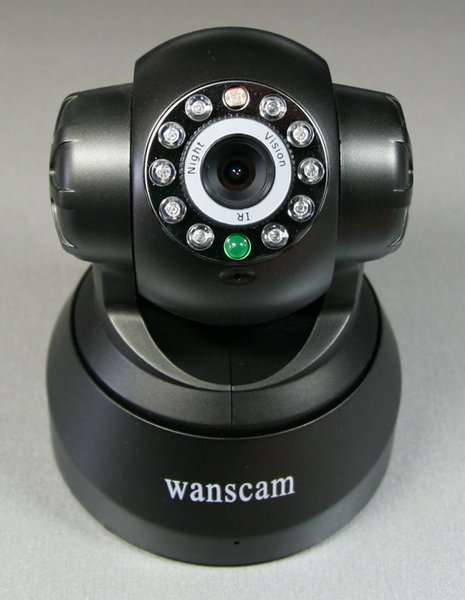
The camera allows you to view and record video with a resolution of 640x480 pixels, it can rotate up and down and in a circle almost 180 degrees. There is a switchable infrared light, sound transmission and a built-in speaker.
The camera is connected to a local network, powered by a voltage of 5 volts from the supplied adapter.
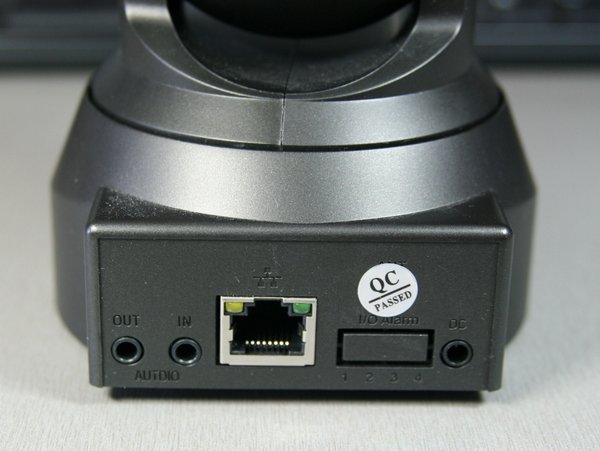
The adapter plug is Chinese, so you need an adapter.
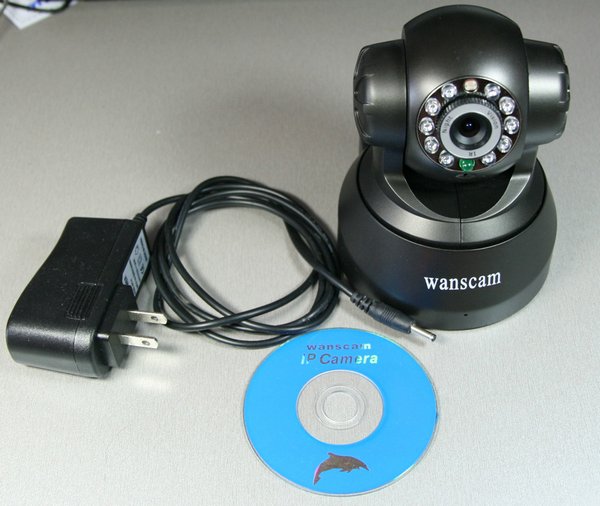
Watching video and controlling the camera occurs through a web-based interface, and there are three options:
1. Mobile interface. The easiest and most convenient to browse.

In this interface, you can move the camera, set the camera to one of five pre-configured positions (presets), enable or disable the inclusion of backlight when lighting is dimmed.
2. Advanced interface. Allows you to configure camera settings.
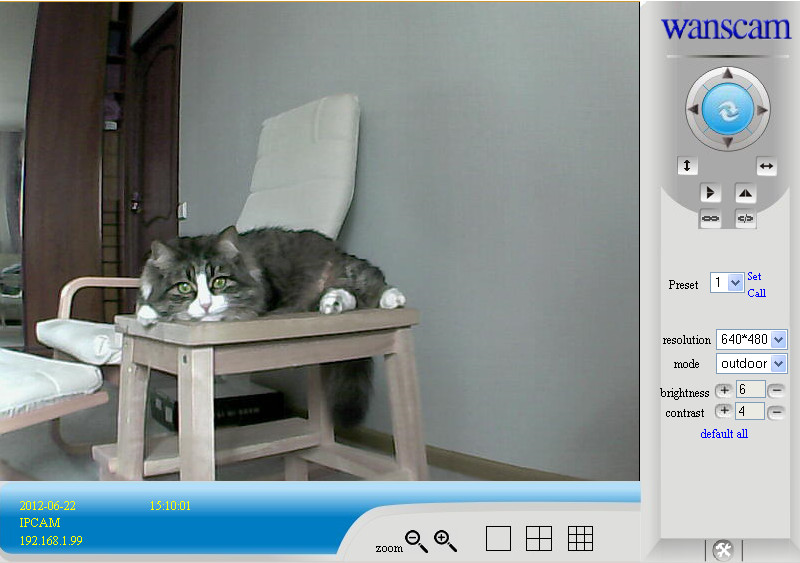
3. ActiveX interface (works only in Internet Explorer).

In addition to all of the above, it allows you to record video from the camera with sound, as well as transmit sound to the camera (it becomes at the same time another sound card in the system).
The system parameters of the camera are configured in a separate screen.

By default, the camera has the address 192.168.1.99:99. It is pre-registered on the 88safe.com DDNS service. A sticker with a DDNS name and password is glued on the bottom of the camera. At the same time, the camera can work with several DDNS services, including dyndns.com. This allows you to organize access to the camera via the Internet.
The Internet connection must have a real IP address, and if it is also static, DDNS will not be needed. In order to see the camera behind the router from the Internet, you must configure port forwarding on the router. For example, you can specify that port 8009 is forwarded to the address 192.168.1.99 and port 99. In this case, to access the camera via the Internet, you will need to go to the address of the router with port 8009 if the address is static or to the address given by the DDNS server and port 8009 if the address is dynamic.
In addition to viewing through a browser, the camera can send frames to e-mail or ftp by the movement of the object. In addition, the camera can send frames to FTP once in a specified number of seconds. It was this opportunity that was used for bird broadcasting. Each frame has a unique and unpredictable name, consisting of the name of the camera, the date and time of the picture.
In order for these frames to be used, one of the readers of my blog wrote a script renaming the newest frame, deleting all old frames and updating the picture every five seconds.
The camera sees perfectly in the infrared range. Apparently therefore, the bright green foliage of the trees turns purple - it reflects IR well.
Here is a shot taken in total darkness with IR on.
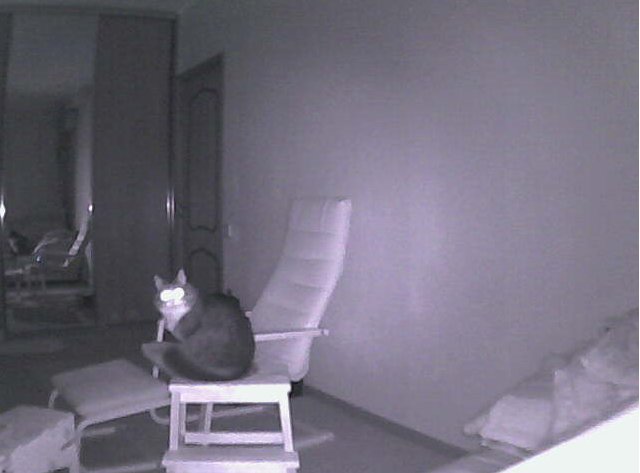
A fragment of the video recorded by this camera.
I did not regret the fifty dollars spent - the cameras came in handy when I found a wagtail nest on the balcony and I think it will come in handy again.
Upd: PDF instructions: one , two .
Upd2: Thanks to Coolver , it turned out that the camera sends the video stream to the address
http: ///videostream.cgi?user=& password =.

The camera allows you to view and record video with a resolution of 640x480 pixels, it can rotate up and down and in a circle almost 180 degrees. There is a switchable infrared light, sound transmission and a built-in speaker.
The camera is connected to a local network, powered by a voltage of 5 volts from the supplied adapter.

The adapter plug is Chinese, so you need an adapter.

Watching video and controlling the camera occurs through a web-based interface, and there are three options:
1. Mobile interface. The easiest and most convenient to browse.

In this interface, you can move the camera, set the camera to one of five pre-configured positions (presets), enable or disable the inclusion of backlight when lighting is dimmed.
2. Advanced interface. Allows you to configure camera settings.

3. ActiveX interface (works only in Internet Explorer).

In addition to all of the above, it allows you to record video from the camera with sound, as well as transmit sound to the camera (it becomes at the same time another sound card in the system).
The system parameters of the camera are configured in a separate screen.

By default, the camera has the address 192.168.1.99:99. It is pre-registered on the 88safe.com DDNS service. A sticker with a DDNS name and password is glued on the bottom of the camera. At the same time, the camera can work with several DDNS services, including dyndns.com. This allows you to organize access to the camera via the Internet.
The Internet connection must have a real IP address, and if it is also static, DDNS will not be needed. In order to see the camera behind the router from the Internet, you must configure port forwarding on the router. For example, you can specify that port 8009 is forwarded to the address 192.168.1.99 and port 99. In this case, to access the camera via the Internet, you will need to go to the address of the router with port 8009 if the address is static or to the address given by the DDNS server and port 8009 if the address is dynamic.
In addition to viewing through a browser, the camera can send frames to e-mail or ftp by the movement of the object. In addition, the camera can send frames to FTP once in a specified number of seconds. It was this opportunity that was used for bird broadcasting. Each frame has a unique and unpredictable name, consisting of the name of the camera, the date and time of the picture.
In order for these frames to be used, one of the readers of my blog wrote a script renaming the newest frame, deleting all old frames and updating the picture every five seconds.
The camera sees perfectly in the infrared range. Apparently therefore, the bright green foliage of the trees turns purple - it reflects IR well.
Here is a shot taken in total darkness with IR on.

A fragment of the video recorded by this camera.
I did not regret the fifty dollars spent - the cameras came in handy when I found a wagtail nest on the balcony and I think it will come in handy again.
Upd: PDF instructions: one , two .
Upd2: Thanks to Coolver , it turned out that the camera sends the video stream to the address
http: //
